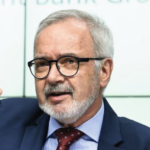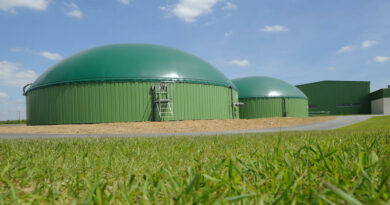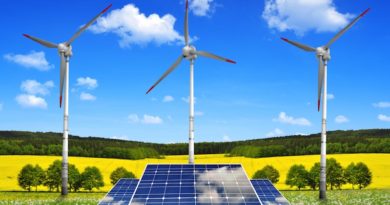
Investing in the transformation to a modern and low-carbon economy
The transition to a modern, low-carbon economy will require big investments in innovation – in the creation, development and implementation of new products, processes and services. We also must improve efficiency, effectiveness and our competitive advantages. We see creativity as the ability to come up with valuable ideas in any activity, any sector, any part of the value chain and in any location. At the European Investment Bank, innovation is the process of transforming these ideas into a commercial product that helps people, businesses and our planet. Investing in the creation of ideas and translating them into positive values – or zero-carbon values – is a top priority at the EIB.
A zero-carbon society
Our long-term vision is to create a climate-neutral society by 2050. The public sector is making a great push to turn the power industry green, but to meet the objectives of the Paris Agreement and keep global warming well below 2 degrees Celsius while pursuing efforts to limit the temperature increase to 1.5 degrees, we need to place more attention on changing transport and other industries, particularly in areas where it is difficult to stop burning fossil fuels and switch to clean energy.
Kicking the oil habit
Why are certain sectors so difficult to change? One word: oil. This is one of the most valuable resources on earth, intrinsically tied to growth, consumption and wealth. Crude oil has become vital to our modern existence: petrol for cars, diesel for trucks and jet fuel to propel aircraft. The world runs on oil. The transport sector emits about 25% of total greenhouse gases in Europe and is one of the oil industry’s biggest customers. Road vehicles account for more than 40% of global oil consumption. Add aircraft, ships and trains, and this percentage rises to 60%. Many other parts of our lives rely on oil: plastic packaging, clothing, medical equipment, mattresses, coatings for television screens, paint, nail polish and washing detergent. This is not sustainable. It is time to kick our oil habit, to let the economy flourish while respecting the limits of the planet.
While the EU has been working hard to make the economy less reliant on oil and to reduce CO2 emissions since the turn of the millennium, we are now seeing the first signs of the decoupling from oil at a global level. Global CO2 emissions from energy use, which make up the largest portion of greenhouse gases by far, remained flat at 33 gigatons in 2019, while the world economy expanded by almost 3%. This is instilling hope. The world is waking up, realising that the climate emergency is real. To have a 50% chance of reaching the 1.5 degrees target, we must emit fewer than 580 gigatons of CO2. That is our carbon budget – forever. At current rates, the budget will be exhausted in about 15 years. Emissions need to fall. Fast.
Climate leadership: Businesses must do more
Pledges to reach net-zero emissions are becoming fashionable, ranging from tech champions such as Microsoft and SAP to industrial giants such as ArcelorMittal, Unilever and AstraZeneca. Even BP – one of the world’s largest oil and gas companies – has made it clear on this goal: “The direction is set. We are heading for net zero. There is no turning back,” the company’s chief executive said. The details may be lacking, but the green movement is here.
The keys to success will be combining business leadership and ambitious public policies. By setting policies and targets in line with a carbon-neutral society, governments give businesses the clarity and confidence to invest decisively in the transition to green energy. For example, in the road transport sector, stringent CO2 emission regulations in the EU are forcing automakers to develop vehicles that emit less carbon and to encourage the purchase of zero- and low-emission vehicles. The number of hybrid and electric vehicle models is rising and prices are dropping. Electric car use is expanding rapidly, from below 0.1% of total EU new car sales in 2011 to 2% in 2018. For passenger cars, technologies are advancing quickly and we can get a glimpse of a fossil fuel-free future for vehicles. However, most other sectors are only at the demonstration phases, involving first-of-a-kind pilot products at best. We need to speed up and broaden such products. We also need a deep transformation in production and consumption models. This transformation is only possible with innovation and the broad application of emerging technologies and digital technologies.
Industrial decarbonisation
The industrial sector, especially the part that uses a lot of energy, constitutes the building blocks of our economy. This includes strategic sectors such as steel, cement, plastics and ammonia. These sectors are crucial suppliers for many other sectors. However, they also emit large amounts of greenhouse gases. These four industries are responsible for 14% of the EU’s total CO2 emissions. Globally, this figure reaches 20%. To achieve our climate goals, industries that use a lot of energy need to significantly reduce their carbon emissions.
Recent research shows that achieving net-zero emissions by 2050 from EU industries that use a lot of energy is becoming possible. In some cases, solutions are technically viable, but the economic challenges are daunting. This change will require significant investment and radical changes in value chains and business models. High capital costs, a lack of incentives or revenue models, long payback times and high risks are just some of the factors restricting financing in the switch to green energy. In other cases, the necessary technologies are not here yet.
Reducing carbon emissions in the industrial sector will require substantial research, development and innovation. It will require innovative, low-carbon production processes, significant investment in industrial equipment and changes in the energy supply system. In short, we need a completely new, greener industrial ecosystem. The global emission equation will not be easy to solve. Cutting emissions is an expensive and inconvenient burden that will mostly help people in other locations or in future generations. The benefits will accumulate over decades and centuries, but the costs must be paid now. This long-term horizon poses financial challenges and calls for long-term investors.
We need more low-carbon research and innovation
To make low-carbon technologies economically viable and to bring new technologies to the market, we need to mobilise efforts and increase research, development and innovation. We are far away from the EU’s target to spend at least 3% of gross domestic product on research and development, leaving an annual investment gap of roughly €110 billion. Climate-related R&D does not even reach 0.04% of GDP. We need to step up our efforts and place low-carbon solutions at the heart of our investments.
We need to act now for three main reasons. First, the energy sector is complex and rather inflexible. Infrastructure and regulatory changes take decades to implement. Today’s decisions will shape our energy systems for years to come. The technical life of industrial projects can be up to half a century. Upgrading or replacing such facilities requires planning and investments well in advance. Secondly, global competition is rising. Finally, the remaining global carbon budget is dwindling.
Encouraging experimentation
The notion of “not putting all eggs in one basket” fits well when we speak of low-carbon innovation. We cannot lock ourselves into one path. We have to pursue many solutions and technologies. For every failure, a success comes closer. Even small successes, leading to small reductions of emissions, are still successes. It is hard to say how a new technology will help us in the future or how it will evolve. Betting on research, development and innovation to create a modern, low-carbon economy is the best bet we can place. We need to put our money to work here.
Climate is part of everything we do
At the EIB, we will no longer finance traditional fossil fuel energy projects after 2021. This means more money will be directed toward innovative green energy projects such as a floating wind farm in Portugal or one of the world’s most advanced battery factories in Sweden. The green project is a great opportunity to improve European society and foster economic growth. We want to support the goals of all EU countries to accelerate their transition to clean energy. We are supporting the European Commission’s European Green Deal to be at the forefront of carbon-emission reductions and the creation of new, green industries and companies. As the EU’s climate bank, our mission is to play a leading role in mobilising the finance needed to meet the Paris Agreement’s goals and support the transition to an environmentally friendly economy that is resilient to climate change.
We are already starting to fulfil our promises. In 2019, the EIB exceeded its target for climate action for the 10th year in a row, providing €19.3 billion to fight climate change. That is 31% of our total financing. This is great, but not enough. We aim to increase our work in climate action and environmental sustainability to 50% of total financing by 2025. In addition, by working with the public and private sectors, we plan to mobilise more than €1 trillion in climate action and environmental sustainability investment over the next 10 years. And we will make sure all our activities meet the Paris Agreement’s guidelines by the end of this year. There is a climate emergency – and we are ready to tackle it.
 |
 |
|
Werner Hoyer President of the European Investment Bank (EIB) |
Ambroise Fayolle Vice President for innovation and development (EIB)
|



